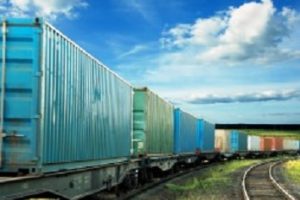The California Air Resources Board (CARB) has petitioned the EPA to adopt more stringent emissions standards for locomotives. Locomotives are currently subject to EPA’s Tier 4 emissions standards, which are “substantially reducing per-locomotive emissions and partially mitigating projected increases in rail traffic,” notes CARB Chair Mary Nichols in her letter. But the reductions do not go far enough.

“Even widespread national deployment of Tier 4 locomotives will not be sufficient to attain the 2015 ozone standard in California or to meet ambitious State and federal targets to cut GHGs [greenhouse gases] and short-lived climate pollutants like black carbon,” writes Nichols. “Developing control technologies offer the opportunity to further reduce locomotive emissions of toxic and criteria air pollutants beyond Tier 4 levels. In addition, use of on-board batteries can support zero-emission rail operation in sensitive areas, as well as cut fuel consumption and GHG emissions.”
Impact on Communities
The major concern in the petition is that existing emissions standards are not sufficiently mitigating “diesel exposure disparities by race and income among residents living in close proximity to most of the major railyards in California.”
“National locomotive emissions and diesel fuel standards, CARB agreements with railroads, California emission standards for drayage trucks and cargo equipment, and private and public investments in cleaner equipment are reducing overall emissions and health risk near our major railyards,” writes Nichols. “But we cannot deliver on our collective responsibility to improve conditions on the ground for overburdened communities without new action by U.S. EPA to require a transition to zero and near-zero emission locomotives.”
Technology-Forcing Standards
Nichols notes that the federal Clean Air Act is technology-forcing, meaning the EPA may adopt standards that require the use of technology that is expected to be available in the foreseeable future.
“The current U.S. EPA Tier 4 locomotive emission standards no longer reflect the best available technology,” says Nichols. “Since the 2008 amendment of the locomotive engine emission standards, technology has advanced significantly, allowing for additional emission reduction benefits. New, stricter standards for both newly built locomotives and remanufactured locomotives are feasible with the advanced technologies currently being developed and tested. Technologies such as after-treatment, compact selective catalytic reduction (SCR), diesel oxidation catalyst (DOC) filters), and on-board batteries for hybrid-electric locomotives, as well as battery and fuel-cell electric locomotives with zero-exhaust emissions, could be used to achieve the reductions needed in diesel PM [particulate matter], PM-2.5, NOx [nitrogen oxides], and GHG.”
Remanufactured Engines Included
The letter requests promulgation of updated emissions standards, including standards for newly manufactured locomotives and standards for emissions upon remanufacture. Under the proposed standard, with capability for zero-emissions operation, newly manufactured locomotives could achieve 99 percent control NOx and diesel particulate matter, 98 percent control of hydrocarbons, and 10 percent to 25 percent control of GHGs.
CARB requests that the EPA respond to the petition by summer 2017.
The petition is here.
